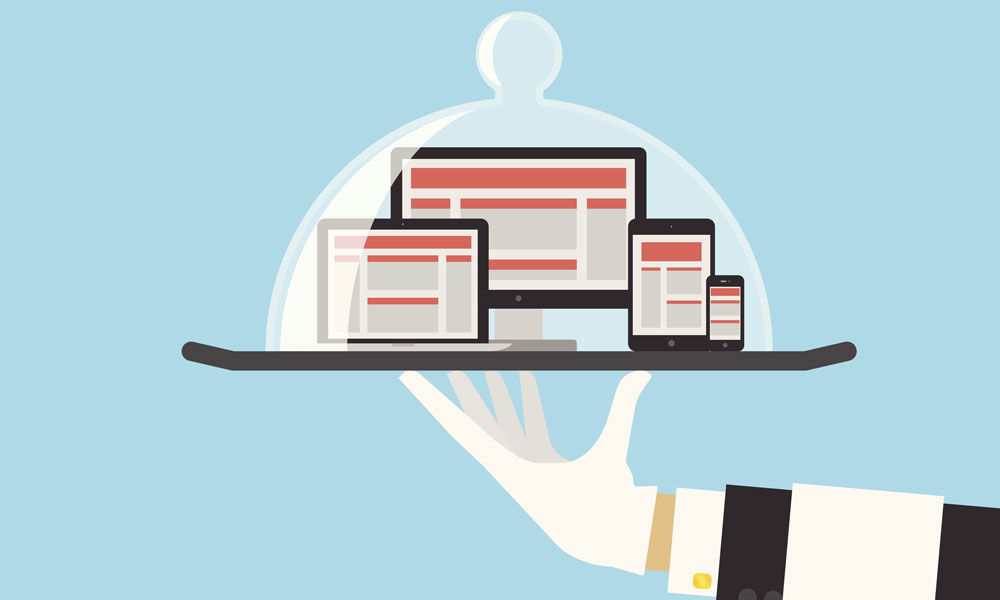
The Other Service Economy: Software as a Service Hits Overdrive
Microsoft's move to offer a monthly cloud-based enterprise package for its Windows operating system is both uncharted territory and, in many ways, the culmination of the software as a service (SaaS) model. So, what does this mean for your IT department, or lack thereof?
Perhaps it was only a matter of time before Microsoft jumped in with both feet on turning Windows into a subscription-based service.
But last week it did just that, announcing the option of a monthly subscription fee for two different bundles of Windows 10, “Secure Productive Enterprise E3” and “Secure Productive Enterprise E5,” both of which include mobility tools, security tools, and versions of Microsoft Office 365 as part of the mix.
According to ZDNet, pricing has yet to be made available for the higher-end offer, but the lower-end option, which used to be called “Enterprise Cloud Suite,” is $7 per month, or $84 per year, per user.
(This type of offer, AdAge reports, had been made available to large enterprises before with a long-term pledge and an upfront payment, but it is now being offered even to small businesses, meaning that small-scale associations might have access to the plan.)
The goal, says Microsoft Cloud Platform General Manager Julie White, is to simplify the options for enterprise buyers:
As we’ve continued to innovate at a rapid pace in the cloud, we’ve heard from many customers that navigating Microsoft technology licensing options can be challenging. This is why we created the Enterprise Cloud Suite (ECS) a few years ago, to help simplify this purchase experience. Building from this approach, today, we’re taking the next step in continuing to simplify our enterprise technology licensing offerings while also delivering more value to our customers—introducing the Secure Productive Enterprise.
(The nomenclature is a little on the complex side, but credit to Microsoft for trying.)
Microsoft is by no means the first to think of this idea, and it is by no means the first Microsoft product to embrace a monthly fee. Office 365 got there a few years ago, with a freemium iPad app coming as part of the package deal; clearly it worked well enough that the company wants to take some cues for Windows.
But it’s clear where things are going: Much of the enterprise software you use, from your operating system to your social media management tools, from your AMS to your community management tools, is likely going to have a specific recurring price tag someday—if it doesn’t already. The shrink-wrapped box is dead, if that wasn’t already clear.
That Microsoft sees potential at the enterprise level for putting a monthly fee on the latest version of Windows, software that just a few years ago it couldn’t even give away, suggests that software as a service (SaaS) isn’t just a novel idea that needs to be introduced: It’s the future.
It makes sense. Now feels like the time for services that are largely cloud-based to have a breakthrough, even if we can remember a time when we had to install them using a stack of floppy disks. As I noted last month, recent research by Gartner found that many enterprises were likely to embrace cloud-based software in the coming years, partly because tools that once came in boxes were becoming cloud-only.
When I first wrote about this phenomenon back in 2013, I noted that SaaS offerings have both inherent benefits and weaknesses. On the plus side, they tend to be updated more often; in the negative column, they cost more over time and can create budgetary headaches if your organization subscribes to too many of them.
But, if I had to be honest, the main reason we’re seeing this phenomenon take over so completely is simple: It works better for software companies. A lot of small software purchases simply represent a better business model than a single large purchase every few years.
Why? Well, you know where the really small purchases are coming from, and when you’re working in a niche like enterprise or specialized software, the larger purchases are fewer and farther between.
For many enterprise buyers, however, the one-license-one-device setup remains king, and Microsoft knows this. In comments to ZDNet‘s Mary Jo Foley, a company spokesperson made a point of saying that it would be careful not to rock the boat for IT departments that prefer making Windows a one-time purchase.
“Microsoft continues to offer per-device licensing for Windows that includes a perpetual upgrade license with Software Assurance attached, and there are no changes to these per-device offers outside of renaming as Windows 10 Enterprise E3,” the spokesperson said.
If that’s the case, you might wonder, why switch? The answer: Microsoft wants to be more than just a software provider; it wants to be a vendor that works directly with you. AdAge lays the strategy out: Basically, by paying the monthly fee, you get access to enhanced security features, as well as to Microsoft partners that can manage the software deployments—a lifesaver if your “IT department” is the same person that’s in charge of the member database, the website, and your social media strategy.
And ultimately, I think we’ll see more of this as SaaS products mature in the coming years. The “service” part of that term is going to become more and more important as software firms try to find ways to help their customers out, no matter their size.
In other words, these monthly subscriptions are going to come with a benefits package. Fortunately, you work at an organization that knows how important such benefits are—and what benefits fail to move the needle.
So, sure, you may be paying more in the long run, but you’re getting something tangible in return. This stuff simply costs too much for your organization to expect any less.
(iStock/Thinkstock)






Comments